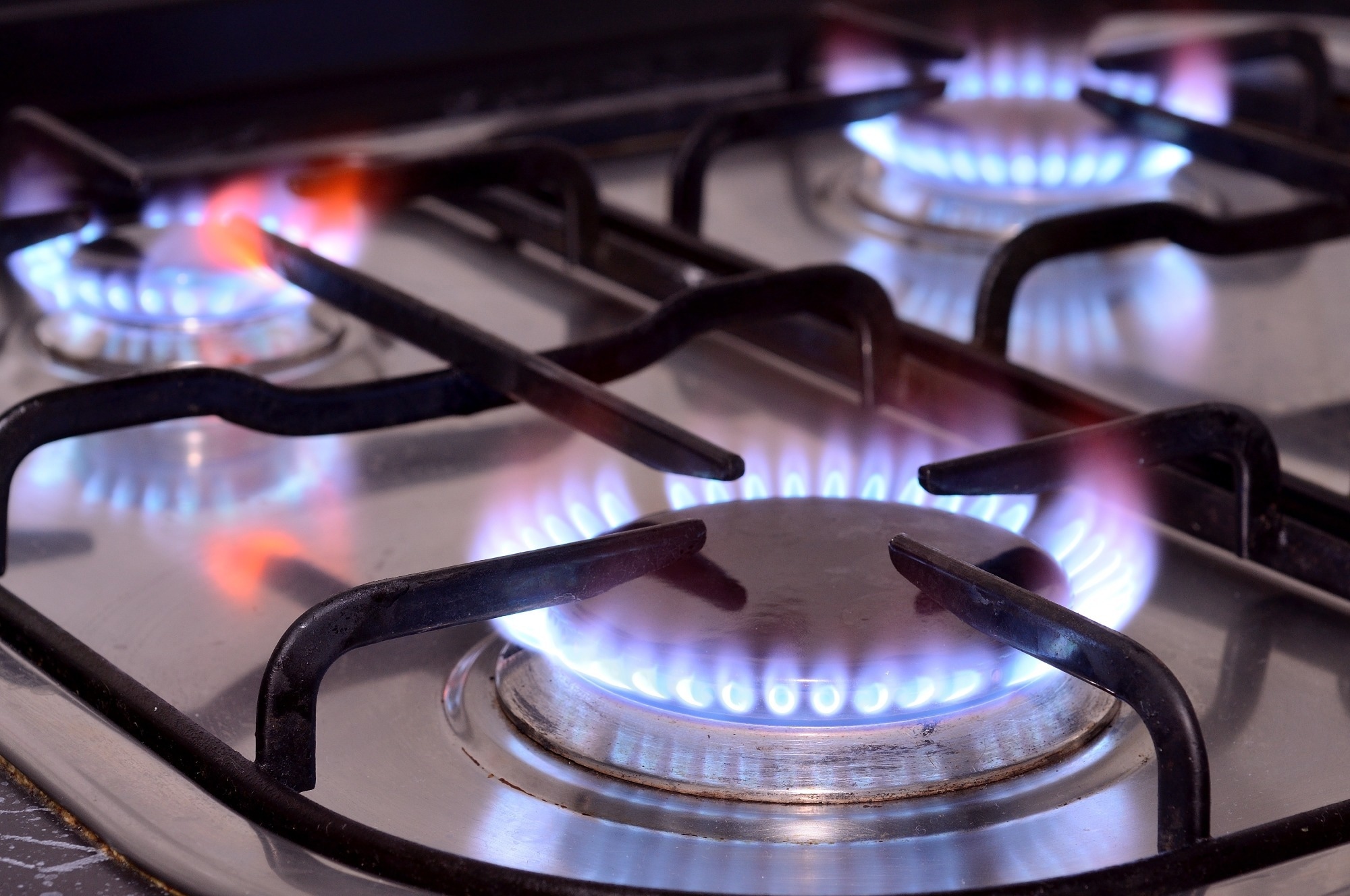In a recent study published in the Environmental Science & Technology Journal, researchers quantified the benzene emission factors based on combustion using propane and gas stoves and benzene emissions from other types of stoves such as induction, radiant, and electric coil stoves.
 Study: Gas and Propane Combustion from Stoves Emits Benzene and Increases Indoor Air Pollution. Image Credit: Hamik/Shutterstock.com
Study: Gas and Propane Combustion from Stoves Emits Benzene and Increases Indoor Air Pollution. Image Credit: Hamik/Shutterstock.com
Background
Appliances such as water heaters, stoves, and furnaces that use natural gas are known to emit carbon dioxide during combustion and methane during incomplete combustion or leaks.
Other toxic chemicals gas stoves emit include carbon monoxide, formaldehyde, and nitrogen dioxide, known as respiratory irritants or carcinogens. Studies have reported that the emission of nitrogen dioxide indoors from gas stoves has been linked to an increased risk of pediatric and adult asthma.
While the emission levels of nitrogen dioxide, formaldehyde, and carbon monoxide have been well-studied, other hazardous chemicals such as benzene, are formed through incomplete combustion and are known to be harmful to human health.
Short-term exposure to benzene is known to impair the production of blood cells, while prolonged exposure has been linked to cancers such as lymphomas and leukemias. Therefore, it is essential to systematically quantify and understand the emission of benzene from indoor fossil-fuel-based appliances.
About the study
In the present study, the researchers quantified the benzene emissions for gas, propane, induction, radiant, and electric coil stoves and ovens. Additionally, to account for the emissions from foods such as oils and fats, the researchers cooked two types of meals on induction ovens, which do not emit benzene.
Moreover, to ensure that the measured benzene emissions were only those emitted from the fuel and not from the food being cooked, they boiled water in the same pot in all instances.
In the case of gas, electric, or propane ovens, they measured the emissions using empty ovens. Benzene emissions were measured inside closed spaces created by shutting the kitchen windows and doors and sometimes sealing the kitchen.
The emissions were measured across 14 counties in the states of Colorado and California, in the United States, for a total of 87 stoves, and the locations included apartments, private homes, and Airbnb rentals, with participants selected through an online sign-up page and community and neighborhood associations.
The benzene emissions were determined based on increased benzene concentrations in the kitchens over time.
An analyzer called AROMA-VOC (volatile organic compounds) that measures benzene concentrations based on the infrared spectroscopic absorbance signature was used to quantify benzene concentration at different times throughout the experiment.
Furthermore, to determine the benzene emissions originating from the cooking of certain foods, the researchers measured the benzene emissions from cooking bacon and pan-fired fish on two separate induction cooktops. Each meal was cooked for three replicates until well done.
Results
The results reported that the combustion of propane and natural gas in stoves across the 14 counties in Colorado and California resulted in repeated and detectable levels of benzene emissions, with benzene concentrations in some households well surpassing the established thresholds or benchmarks for human health.
Furthermore, compared to radiant and electric coil stoves, the mean benzene emissions of propane and natural gas burners turned to high, or of ovens set that 350 °F was close to 25 times higher.
Neither the induction stove nor the bacon and pan-fried fish meals cooked on induction stoves emitted detectable levels of benzene.
However, the benzene emitted from propane and natural gas stoves also dissipated throughout the residence and elevated the benzene levels beyond the health benchmarks, even in bedrooms.
Furthermore, this dissipation of benzene throughout the house continued to occur for hours after the stove's usage had stopped for the day.
The findings indicated that the benzene emissions indoors from the propane and natural gas stoves and ovens are at concentrations that can increase or exacerbate health conditions.
Furthermore, depending on the ventilation systems and the size of the house, the benzene emitted from these propane and gas stoves and ovens can spread to the rest of the house, which was demonstrated by the increase in benzene concentrations in the bedrooms beyond the chronic exposure thresholds and well after the usage of the appliance had stopped.
Conclusions
Overall, the findings reported that the benzene emitted by stoves and ovens run on natural gas or propane often exceeded the chronic exposure thresholds and endangered human health.
Furthermore, the emissions continued even after the appliances were shut down, and the emitted benzene was found to have migrated to other rooms of the house, depending on the ventilation conditions in the building.
The results highlight the role of gas and propane stoves in reducing indoor air quality.
-
Kashtan, Y. S., Nicholson, M., Finnegan, C., Ouyang, Z., Eric David Lebel, Michanowicz, D. R., Seth, & Jackson, R. B. (2023). Gas and Propane Combustion from Stoves Emits Benzene and Increases Indoor Air Pollution. Environmental Science & Technology. doi: 10.1021/acs.est.2c09289. https://pubs.acs.org/doi/10.1021/acs.est.2c09289
Posted in: Medical Condition News | Miscellaneous News | Disease/Infection News
Tags: Asthma, Blood, Carbon Monoxide, Chemicals, Chronic, Fish, Food, Formaldehyde, Respiratory, Technology
.jpg)
Written by
Dr. Chinta Sidharthan
Chinta Sidharthan is a writer based in Bangalore, India. Her academic background is in evolutionary biology and genetics, and she has extensive experience in scientific research, teaching, science writing, and herpetology. Chinta holds a Ph.D. in evolutionary biology from the Indian Institute of Science and is passionate about science education, writing, animals, wildlife, and conservation. For her doctoral research, she explored the origins and diversification of blindsnakes in India, as a part of which she did extensive fieldwork in the jungles of southern India. She has received the Canadian Governor General’s bronze medal and Bangalore University gold medal for academic excellence and published her research in high-impact journals.
Source: Read Full Article